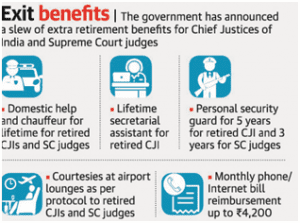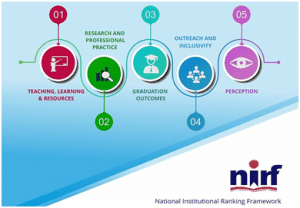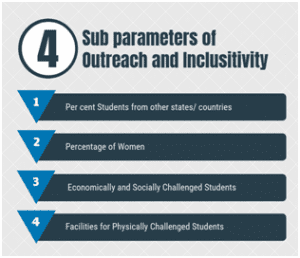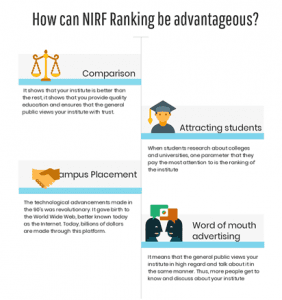DAILY CURRENT AFFAIRS (AUGUST 31, 2022)
THE INDIAN POLITY AND GOVERNANCE
1. CHALLENGING THE SPECIAL MARRIAGE ACT, 1954
THE CONTEXT: Recently, the Supreme Court dismissed a writ petition challenging provisions of the Special Marriage Act (SMA), 1954 requiring couples to give a notice declaring their intent to marry 30 days before their marriage.
THE EXPLANATION:
• The Supreme Court dismissed a writ petition challenging the Constitutional validity of certain provisions of the SMA under which couples seek refuge for inter-faith and inter-caste marriages.
• The writ petition has called these provisions violative of the right to privacy guaranteed under Article 21 of the Constitution as they require couples to give a notice of 30 days before the date of marriage inviting objections from the public.
• The writ petition has also said that the provisions contravene Article 14 on prohibition of discrimination on grounds of religion, race, caste and sex as well as Article 15 on right to equality as these requirements are absent in personal laws.
• Another writ petition in Nandini Praveen vs Union of India & Others filed on similar grounds was admitted by the Supreme Court in 2020 and the government’s reply to is awaited.
What are the provisions that have been challenged?
• Section 5 of the SMA requires couples getting married under it to give a notice to the Marriage Officer 30 days before the date of marriage.
• Section 6 requires such a notice to be then entered into the Marriage Notice Book maintained by the Marriage Officer, which can be inspected by “any person desirous of inspecting the same”.
• These notices have to be also affixed at a conspicuous place in the office of the Marriage Officer so that anyone can raise an objection to the marriage.
• Section 7 provides the process for making an objection such as if either party has a living spouse, is incapable of giving consent due to “unsoundness of mind” or is suffering from mental disorder resulting in the person being unfit for marriage or procreation.
• Section 8 specifies the inquiry procedure to be followed after an objection has been submitted.
What is the Special Marriage Act?
• A marriage under the Special Marriage Act, 1954 allows people from two different religious backgrounds to come together in the bond of marriage.
• The Special Marriage Act, 1954 lays down the procedure for both solemnization and registration of marriage, where either of the husband or wife or both are not Hindus, Buddhists, Jains, or Sikhs.
• According to this Act, the couples have to serve a notice with the relevant documents to the Marriage Officer 30 days before the intended date of the marriage.
Registration process Special Marriage Act:
• Both parties are required to be present after the submission of documents for issuance of public notice inviting objections.
• Registration is done 30 days after the date of notice after deciding any objection that may have been received during that period by the SDM.
• Both parties along with three witnesses are required to be present on the date of registration.
2. LIFETIME PERKS FOR FORMER CJIS, SC JUDGES
THE CONTEXT: The Centre on amended service rules for Supreme Court judges by making additional post-retirement allowances, including a rent-free Type-VII accommodation in Delhi for a retired Chief Justice of India (CJI) for six months after demitting office and protocol courtesies at airports for SC judges.
THE EXPLANATION:
• The benefits of the amended rules will be extended to all living former CJIs and retired Supreme Court judges. As per the latest changes in the rules, a retired chief justice of India will also be entitled to a security cover round-the- clock at their residence in addition to a 24X7 personal security guard for a period of five years from the date of retirement.
clock at their residence in addition to a 24X7 personal security guard for a period of five years from the date of retirement.
• A retired Supreme Court judge will be entitled to 24X7 security cover at his or her residence in addition to a round-the-clock personal security guard for a period of three years from the date of retirement. If a retired CJI or a retired judge of the top court is already provided a “higher grade” security on the basis of threat perception, “the higher grade security already provided shall continue”.
• A retired CJI will be entitled to a rent-free Type-VII accommodation in Delhi (other than the designated official residence) for a period of six months from the date of retirement. Type VII accommodation is usually provided to sitting MPs who have been former Union ministers. The accommodation facility was extended to retired CJIs earlier this month.
• A retired judge of the Supreme Court will get a domestic help and a chauffeur for lifetime from the day of retirement. The ceremonial lounge facility at airports extended to retired CJI and retired Supreme Court judges announced earlier this month would also continue.
• Retired chief justices of the high courts were also extended the VIP lounge facility by amending the High Court Judges Rules. A retired CJI or a retired Supreme Court judge will be entitled to a residential telephone “free of cost” and reimbursement of telephone call charges of residential telephone or mobile phone or broadband or mobile data or data card not exceeding Rs 4,200 per month, plus taxes.
• “The post-retirement benefits under this rule shall be admissible to the retired Chief Justice (of India) or the retired Judge (of SC) if no such facilities are availed from any High Court or from any other government body where the retired Chief Justice or a retired Judge has taken up any assignment after retirement,” the notification explained. The expenditure on domestic help, chauffeur, secretarial assistant and telephone reimbursement will be borne largely by the Supreme Court or a high court establishment.
• Till recently, retired CJI and top court judges were given monthly monetary benefits to hire guards, domestic helps and chauffeurs. The amount given would be discontinued, a functionary said. While a retired CJI was entitled for Rs 70,000 per month for the purpose, retired Supreme Court judges were provided Rs 39,000 per month. On August 23, the government had amended the Supreme Court Judges Rules to provide chief justices of India rent-free accommodation for six months after demitting office and round-the-clock security for one year upon superannuation to CJIs and retired Supreme Court judges.
• For one year after retirement, CJI and Supreme Court judges were also given chauffeur facility and secretarial assistant. The sanctioned strength of the Supreme Court is 34 judges and on an average, three retire annually, a functionary pointed out.
3. KERALA PASSES BILL ON LOK AYUKTA
THE CONTEXT: Recently Kerala Assembly passed the Kerala Lok Ayukta (Amendment) Bill.
THE EXPLANATION:
• The amendments were related to the competent authority to consider Lok Ayukta recommendations.
• In the case of any unfavourable decision from the Lok Ayukta against the Chief Minister, the competent authority will now be the Legislative Assembly instead of the Governor in the existing Act.
WHAT IS LOKAYUKTA?
• The Lokayukta is an authority at state level which deals with corruption and mal-admistration complaints made by the general public.
• This authority is constituted for a quicker redressal of public grievances.
• The concept of Lokayukta traces back to the ombudsman in Scandinavian countries.
• The Lokayukta is put into power when the Lokayukta act is passed in the state and works for the State governments and addresses the complaints of the people living in the state.
• The complaints can be against the integrity and efficiency of the government or its administration which includes the people working in the government sector.
• The complaints can also be regarding any corruption faced by the people from the government administration.
• To address these serious issues a well-qualified and reputed person, generally a former high court chief justice or a former Supreme Court judge, is appointed as the Lokayukta and this person once appointed cannot be dismissed or transferred by the government.
• The creation of Lokpal at the centre and Lokayukta at the state level was suggested by the Administrative Reforms commission in the year 1966 after which the first Lokpal act was passed in the year 1971 in the state of Maharashtra.
• The Lokayukta has a fixed tenure and has to make sure to perform the given functions independently and impartially.
• The general public can directly approach this lokayukta with complaints against corruption, nepotism or defects in administration.
4. THE NCRB’S ‘CRIME IN INDIA’ REPORT
THE CONTEXT: A new edition of ‘Crime in India’, the annual report of the National Crime Records Bureau (NCRB), was released recently, for crime-related statistics in 2021.
THE EXPLANATION:
• NCRB reports have been a valuable compilation of statistics over the years on offences ranging from crimes against women to economic and financial crimes.
• Overall, 2021 saw a 7.6 per cent decline in the number of crimes registered, as compared to 2020.
• The crime rate per lakh population declined from 487.8 in 2020 to 445.9 in 2021.
Who publishes the NCRB report?
• The NCRB was established in January 1986 with the aim of establishing a body to compile and keep records of data on crime.
• It functions under the Union Home Ministry.
Apart from publishing annual reports, its functions include:
• collection, coordination and exchange of information on inter-state and international criminals to the respective states.
• NCRB also acts as a “national warehouse” for the fingerprint records of Indian and foreign criminals, and assists in locating interstate criminals through fingerprint search.
Collection of information
• The NCRB report contains data received from the 36 states and Union Territories across the country.
• Similar data is furnished for 53 metropolitan cities, or those having a population of more than 10 lakh as per the 2011 census, by respective state-level crime records bureaus.
• This information is entered by state/UT police at the police station/ district level, and is then validated further at the district level, then the state level, and finally by the NCRB.
Limitations of NCRB report
• Since the publication caters to the ‘Principal Offence Rule’ for classification of crime, the actual count of each crime head may be under reported.
• The Principal Offence Rule states that in a case where multiple offences are registered, only the “most heinous crime”, carrying the most stringent punishment, will be considered when counting.
• For example, ‘Murder with Rape’ is accounted as ‘Murder’, leading to undercounting of the crime of rape.Since the report only compiles data that are submitted at the local level, inefficiencies or gaps in data at that level have an impact. Vacancies or a shortage of police officers at the local level may hinder the collection of data.
• The data record the incidence of registered crime rather than of actual crime.So, when reported crimes against women in Delhi rose significantly in the aftermath of the 2012 bus gangrape case, it may have been a reflection of increased awareness about the need for registering crimes, both among those affected and the police, rather than an actual increase in the incidence of crime against women.
• ‘Rise in crime’ and ‘increase in registration of crime by police’ are clearly two different things, a fact which requires better understanding,.
• Since actual numbers will be mostly higher for the bigger states, a “crime rate” is calculated per unit of population.But again, the data used at present for determining the total population is old — from the 2011 Census.
THE INTERNATIONAL RELATIONS
5. SOLOMON ISLANDS SUSPENDS ALL VISITS FROM FOREIGN NAVIES
THE CONTEXT: Recently,Solomon Islands has suspended visits from all foreign Navies, citing a need to review approval processes after a U.S. Coast Guard ship was unable to refuel at its port.
THE EXPLANATION:
The decision comes amid concerns over:
• the Solomons’ growing ties with China in recent years,
• switching diplomatic recognition from Taipei to Beijing in 2019
• signing a security pact with the Asian power in April.
• Western governments are wary that the islands could provide China with a military foothold in a strategically important region.
About Solomon Islands
• Solomon Islands is an island country consisting of six major islands and over 900 smaller islands in Oceania, to the east of Papua New Guinea and northwest of Vanuatu.
• Its capital, Honiara, is located on the largest island, Guadalcanal.
• The country takes its name from the Solomon Islands archipelago, which is a collection of Melanesian islands that also includes the North Solomon Islands (a part of Papua New Guinea), but excludes outlying islands, such as the Santa Cruz Islands and Rennell and Bellona.
• In 1568, the Spanish navigator Álvaro de Mendaña was the first European to visit them.
• During World War II, the Solomon Islands campaign (1942–1945) saw fierce fighting between the United States, British Commonwealth forces and the Empire of Japan, including the Battle of Guadalcanal.
• The official name of the then-British administration was changed from the “British Solomon Islands Protectorate” to “The Solomon Islands” in 1975, and self-government was achieved the following year.
• At independence, Solomon Islands became a constitutional monarchy.
THE ECONOMIC DEVELOPMENTS
6. TOPS INFLATION CHARTS AT 8.32%
THE CONTEXT: Recently, the headline inflation measured by the Consumer Price Index has averaged 6.8% in the first seven months of 2022.
THE EXPLANATION:
There are wide disparities in the pace of price rise experienced by consumers across the country, with a dozen States clocking an average inflation of less than 6% and another 12 States averaging more than 7% through 2022 so far.
clocking an average inflation of less than 6% and another 12 States averaging more than 7% through 2022 so far.
• While headline inflation measured by the Consumer Price Index has averaged 6.8% in the first seven months of 2022, consumers in Telangana, West Bengal and Sikkim faced the steepest spike in prices, with their combined retail inflation for rural and urban areas averaging 8.32%, 8.06%, and 8.01%, respectively.
• As many as 14 States, along with the erstwhile State of Jammu & Kashmir, have witnessed price rise higher than the national average through 2022.
• Headline inflation is the raw inflation figure reported through the Consumer Price Index (CPI) that is released monthly by the Bureau of Labor Statistics (BLS). The CPI calculates the cost to purchase a fixed basket of goods to determine how much inflation is occurring in the broad economy.
Some of the other major States where inflation has stayed sharply elevated include
• Maharashtra and Haryana (7.7%),
• Madhya Pradesh (7.52%),
• Assam (7.37%),
• Uttar Pradesh (7.27%),
• Gujarat and J&K (7.2%),
• Rajasthan (7.1%).
Retail prices have been rising at less than 6% in States such as:
• Kerala (4.8%),
• Tamil Nadu (5.01%),
• Punjab (5.35%),
• Delhi (5.56%),
• Karnataka (5.84%).
Smaller States such as Manipur, Goa and Meghalaya have had an average inflation of less than 4% through this period, at 1.07%, 3.66%, and 3.84%, respectively.
The variation in the States’ inflation rates is mainly on account of two factors:
One is food prices, where non-producing States have higher inflation as transport prices get added.
Second is that some States lowered fuel prices while others didn’t, which also made a difference.
Moreover, States that have more rural areas than urban areas face a higher inflation as the rural segment of the Consumer Price Index has a higher weightage for food costs.
THE PRELIMS PERSPECTIVE
7. FRUIT FLY: NOVEL METHOD TO STUDY NUCLEAR MATRIX
THE CONTEXT: Recently, a group of researchers using a novel method, have established a way of studying the nuclear matrix of the fruit fly (Drosophila melanogaster) without removing the nucleus from the embryo.
THE EXPLANATION:
What is the nuclear matrix?
• Every cell that makes up an organism contains a copy of its genome.
• This genome is packaged in special ways with the help of a structure known as the nuclear matrix.
• The nuclear matrix gives an organisation and architecture to the nucleus.The nuclear matrix is like a scaffolding.
• Using biochemical means, if the nucleus is taken out and treated with an enzyme that digests all the DNA, then washed with a solution of high salt concentration so that viable DNA proteins or protein-protein interactions are removed, what is then left is a fibrous meshwork of proteins called the nuclear matrix.
• A familiar figure, the nuclear matrix of fruit flies, for instance, has been studied for many years, mainly by isolating it in nuclei that have been taken out from fruit fly embryos.
• This allows comparative study of nuclear matrix in different cells within the embryo, giving a boost for fruit fly genetics.
NuMat preparation
• The researchers collect embryos which are between zero and 16 hours old.
• They make, for the first time, the in situ nuclear matrix preparation using this entire collection of embryos.
• Some are in very early developmental stages, where they are made up of nuclei only, or just making a mono layer of nuclei across the embryos or have gone through differentiation.The array is made available in one preparation.






